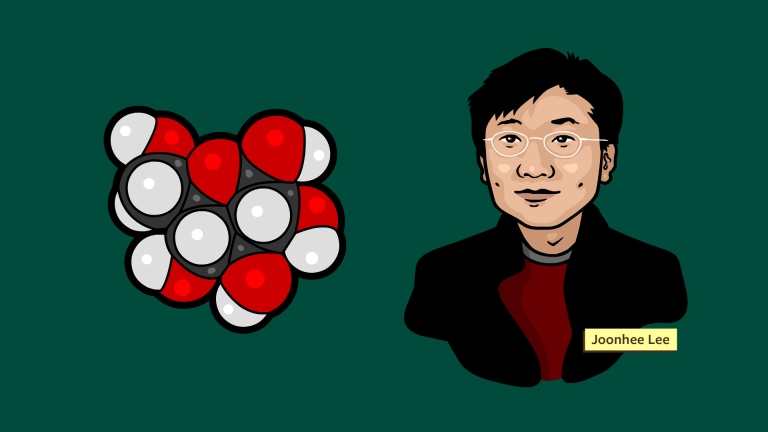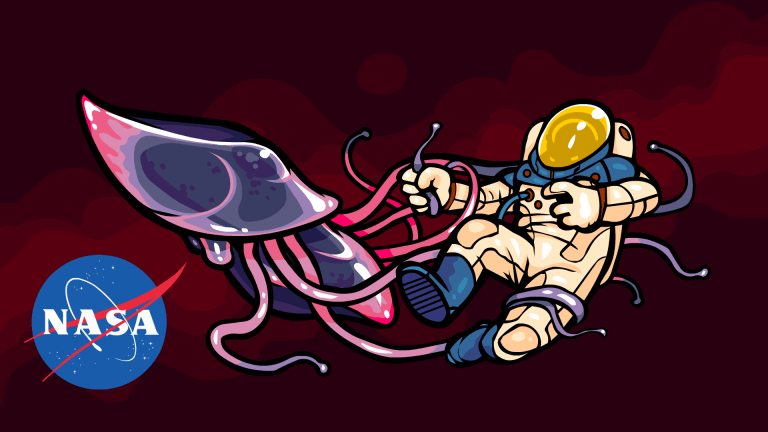Overview
Normally when we think of metabolism, we think of weight loss fads like the Keto diet, the Paleo diet, or intermittent fasting. Metabolism, however, is way more interesting than weight loss trends. It is the process used by your body to transform Cap’n Crunch into brain cells, and some scientists believe this has huge implications for the origin of life!
In this animation, we take a look at the citric acid cycle (sometimes called the Krebs cycle or the tricarboxylic acid cycle), and the reverse citric acid cycle.
Explore Further
- Biography on the Nobel Prize website about Hans Krebs and his discovery of the citric acid cycle in our metabolism: Hans Krebs: Biographical.
- Scientific paper (Nature) on the possible link between the reverse citric acid cycle and the origin of life: Linked cycles of oxidative decarboxylation of glyoxylate as protometabolic analogs of the citric acid cycle.
For Teachers
The content of this video meets criteria in the following Disciplinary Core Ideas defined by Next Generation Science Standards. Use our videos to supplement classroom curriculum.
Contributors
Our videos benefit from guidance and advice provided by experts in science and education. This animation is the result of collaboration between the following scientists, educators, and our team of creatives.
Team
- Jon Perry
- Anthony Danzl
- Jordan Collver
- Tyler Proctor
Advisors
- Ram Krishnamurthy, PhD
- Christopher Parsons, MSc
Transcript
Stated Clearly presents: What is Metabolism?
Many people have this vague idea that the word “metabolism” has something to do with weight loss. This is partly true, the study of metabolism does include research about how cells build, store, and breakdown fat; but metabolism is far more interesting than the latest weight loss trends in hollywood.
Cellular Metabolism can be defined as the sum total of all controlled chemical reactions that occur inside a cell.
Metabolism is so important that several of the chemists working with NASA and the national science foundation’s center for chemical evolution, believe that a better understanding of metabolism could help us finally understand the origin of life itself, and help us know where to to search for life elsewhere in the cosmos.
We often think of individual cells as “things” but in the eyes of a chemist, a cell is a highly active, highly sophisticated chemical system. The cells in our bodies, and as a consequence, our bodies themselves, are better thought of, not as things, but as whirlpools. You are a constant flow of matter and energy.
Food, water and oxygen are constantly consumed by your cells. Waste products like C02, are constantly breathed out again. Other waste products, of course, exit through different routes.
The molecules in your skin are constantly renewed, fully replaced roughly every 48 days. Your bones, though they seem so solid, so permanent, cycle through a full refresh as often as every 10 years.
Again, you are a whirlpool!
Your cellular metabolism consists of hundreds of different reactions. To make sense of them all, researchers often separate them into 2 main categories: Anabolic metabolism: reactions that join molecules together to build new ones. And catabolic metabolism: reactions that break molecules apart.
To remember the difference, think “catabolic” as in “catastrophe” because catabolic reactions destroy things.
When you eat an apple, your digestive tract breaks it down into individual molecules – sugars, fats, and amino acids. These are absorbed by your intestines, enter the bloodstream, and are then distributed to the cells of your body. Once inside a cell, metabolic reactions transform those molecules into little bits of you.
This concept is so important that it’s worth repeating: a cell’s metabolism, it’s internal network of chemical reactions, takes molecules from the environment (the molecules of an apple, in this case), breaks them down and transforms them, into pieces of the cell itself. Sometimes the cell builds replacement parts for its own molecules that have been worn out. Sometimes it makes energy molecules. These act like fuel, and will power the cell’s future activities. Muscle cells use energy molecules to contract, brain cells use them to help form thoughts, and so on.
This chart shows just some of the networks, cycles, and series of chemical reactions happening inside your cells. As you can see, cellular metabolism is complex.
Different species have evolved different metabolic pathways which is partly why some things that are toxic to you, are eaten by other critters. Hydrogen sulfide gas, for example, can kill you if breathed in but several species of bacteria use the stuff as food!
That said, scientists studying the origin of life have discovered that one very special series of metabolic reactions, the citric acid cycle, exists in one form or another in almost all species studied so far! The fact that it’s nearly universal, suggests that the citric acid cycle is extremely old.
The citric acid cycle, sometimes called the Krebs Cycle (named after its founder), starts when food particles: sugars, fats, and amino acids that came from your lunch) are transformed into citric acid. By binding citric acid together with other molecules and breaking them apart again in a variety of ways, citric acid is transformed into multiple different types of molecules, and then back to citric acid again.
Now, this might seem counterproductive, simply spinning in a circle like that, but many of the side molecules it reacts with along the way are transformed in the process, modified into parts, or at least the precursors of parts, that your cell needs to repair damaged molecules, grow, reproduce, and power its movements!
The citric acid cycle is the engine of life, the core whirlpool inside your cells!
In our case, fats, sugars, and amino acids from our food are broken down and eventually fed to the citric acid cycle. Carbon dioxide and water are produced as waste products which we then breathe out.
In certain species of bacteria, however, the citric acid cycle runs in reverse. Water and carbon dioxide are used as “food sources” and react together to eventually produce large carbon molecules that bacteria use to build fats, sugars, and amino acids.
Because the reverse citric acid cycle uses such simple starting molecules (H2O and CO2, things that would have been super abundant on the early Earth) some researchers believe that the “reverse” citric acid cycle has been misnamed. It likely predates the “normal” citric acid cycle by millions of years. In fact, some argue that the reverse citric acid cycle, or something similar to it, might predate life itself and may have kickstarted the first living cells. We’ll talk more about that in a future video!
So in summary, what is cellular metabolism? Cellular Metabolism is the sum total of all the controlled chemical reactions that happen inside a living cell.
Anabolic reactions take small molecules and put them together to build new ones.
Catabolic reactions (remember “catastrophe”) break molecules apart.
At the core of metabolism, is a series of both catabolic and anabolic reactions called the citric acid cycle.
You are a whirlpool!
I’m Jon Perry and that is Metabolism Stated Clearly.





